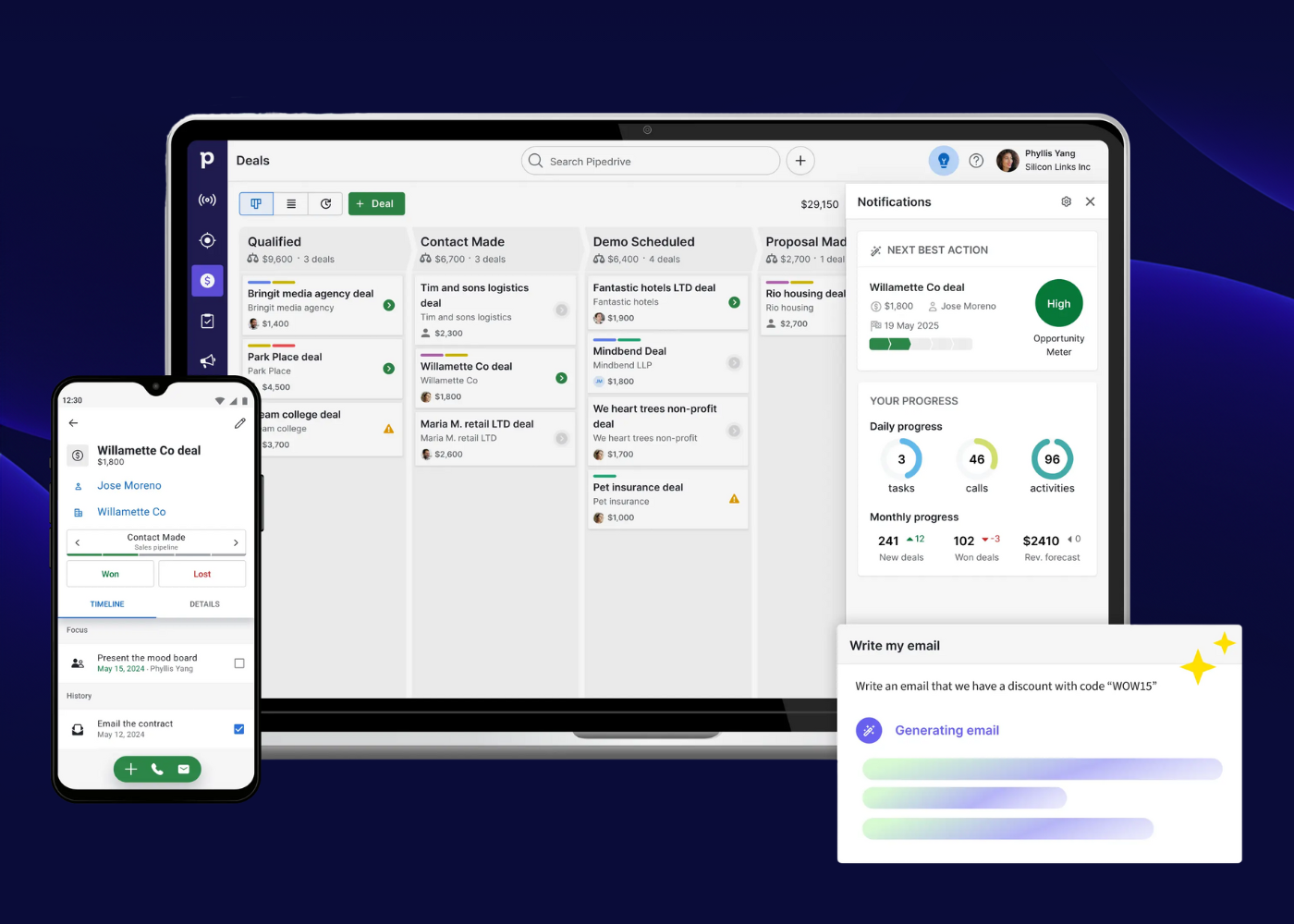Inbox overload is real – and it’s killing your CRM adoption
If you’re in sales or managing a sales team, you’ve probably seen the pattern:
A new CRM gets rolled out. It’s full of features, dashboards, workflows… but barely anyone logs in.
Why? Because your team spends their day in their inbox.
Chasing leads, responding to customers, sharing updates with colleagues – it all happens over email. And every time someone has to leave their inbox to “go update the CRM,” momentum is lost.
This is where inbox-based selling comes in – and why more SMEs are turning to CRM tools that integrate directly with the platforms they already use.
What is inbox-based selling?
Inbox-based selling means working your CRM leads, contacts, and pipeline directly from your email inbox.
It cuts down the friction between selling and updating, by bringing CRM functions right to where salespeople already work.
For example:
- A lead emails you – you can update the opportunity stage right from the message.
- You spot a new contact – add them to the CRM instantly, without switching tabs.
- You need to check call notes – just open the CRM panel inside your inbox.
It’s not a fancy add-on. It’s about making the right thing (keeping your CRM updated) the easy thing.
Why it matters for SMEs
For small and growing businesses, resources are tight and teams wear many hats. That means your CRM has to support your way of working – not create more admin.
Inbox-based selling helps you:
- Increase adoption: When CRM fits into the natural flow of work, more people use it – and data quality improves.
- Save time: No more copy-pasting emails, switching windows, or logging in and out of tools.
- Stay responsive: Act on leads and updates instantly, without adding to your to-do list.
- Build a complete picture: CRM activity stays accurate and up to date, so your reports and pipeline reviews reflect reality.
It’s not just about convenience – it’s about effectiveness. The sales team spends less time on admin and more time doing what they’re good at.
What inbox-based selling looks like with Maximizer CRM
Maximizer is designed with SMEs in mind – and its inbox integration is a great example of that. It lets your team:
- View, update, and create contacts, tasks, opportunities and notes right from Outlook or Gmail
- Access account history without leaving the message thread
- Add CRM reminders based on client conversations
This isn’t a clunky bolt-on – it’s CRM embedded into the daily workflow.
The result? Less frustration, better data, and a team that actually uses the tools you’ve invested in.
Final thoughts
If your CRM feels like a separate chore rather than part of the job, that’s a red flag.
A CRM should fit your business – and for many SMEs, that means fitting into the inbox.
Inbox-based selling bridges the gap between systems and habits. It makes it easier for teams to do the right thing, faster. And when CRM becomes seamless, everything else – data, performance, growth – becomes easier too.
Curious about how inbox-based selling works in practice?




